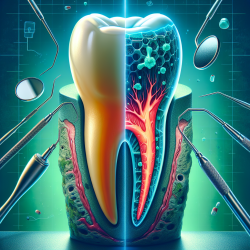Introduction
In the realm of dentistry, the primary objective is the long-term preservation of teeth. A recent case report titled "Hemisection: Partial preservation of compromised tooth" provides valuable insights into a procedure that holds promise for achieving this goal. Hemisection, which involves the partial removal of a tooth while preserving its healthy portion, offers an alternative to full extraction, particularly in cases where one root is compromised. This blog explores the clinical implications of hemisection, encouraging practitioners to consider this approach and engage in further research to enhance patient outcomes.
Understanding Hemisection
Hemisection is a dental procedure that involves the separation of a multirooted tooth, preserving the healthy root and crown portion. This technique is particularly beneficial when one root is severely decayed, fractured, or otherwise compromised. By retaining the natural tooth structure and alveolar bone, hemisection allows for the placement of a fixed prosthetic appliance, thereby maintaining functionality and aesthetics.
Clinical Indications and Considerations
The decision to perform a hemisection should be based on specific clinical criteria:
- The presence of a multirooted tooth with one root damaged by caries, fracture, or root perforation.
- The remaining root must be amenable to endodontic treatment.
- The root morphology should allow for good surgical accessibility and periodontal maintenance.
Despite its advantages, hemisection is not without drawbacks. Poorly shaped roots, patients unwilling to undergo dental procedures, and inadequate endodontic candidates may limit the applicability of this technique.
Case Report Insights
The case report detailed in the research article involved a 55-year-old female patient with decay and pain in the lower right back tooth area. The clinical examination revealed a large carious lesion in the right mandibular first molar. Following a thorough evaluation, the treatment plan included a hemisection and the placement of a fixed prosthesis using the mesial portion of the mandibular first and second premolars. The procedure demonstrated successful outcomes, with radiographic evidence of stable bone levels and improved oral hygiene over a three-year follow-up period.
Implications for Practice
For dental practitioners, hemisection offers a viable alternative to tooth extraction, particularly in cases where preserving a portion of the tooth can extend the life of a prosthesis. The procedure requires a multidisciplinary approach, combining endodontic, restorative, and prosthodontic expertise. Practitioners are encouraged to consider hemisection as part of their treatment planning, particularly for patients with financial constraints or those who prefer to avoid implants.
Conclusion
Hemisection represents a conservative approach to tooth preservation, offering a valuable option for maintaining teeth and bone structure. As dental professionals, it is crucial to remain informed about such techniques and their potential benefits. By integrating hemisection into clinical practice, practitioners can enhance patient outcomes and contribute to the advancement of conservative dentistry.
To read the original research paper, please follow this link: Hemisection: Partial preservation of compromised tooth.










